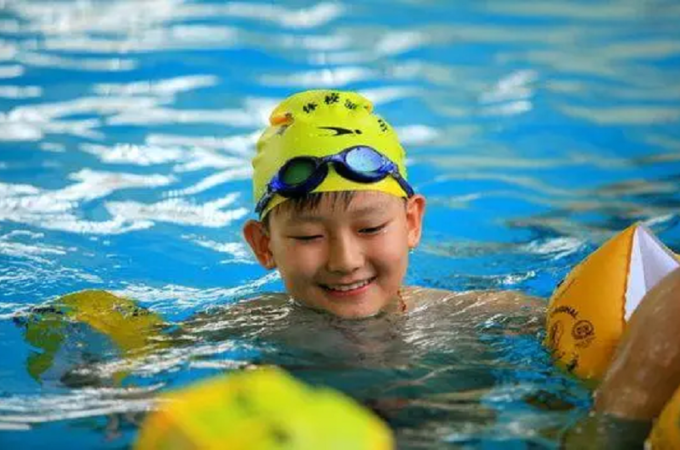
End Your Struggle with Classroom Management with These 11 Effective Steps
Preschool classrooms are bustling environments filled with bo. It requires a delicate balance of organization, engagement, and empathy to guide young learners through their formative years. Read on to explore some of the proven classroom management tips for preschool teachers that will help foster a positive and enriching learning environment.
What Is Classroom Management?
Classroom management is methods and practices that teachers can use to manage their student’s behaviors in class and create a healthy learning environment. As teachers, it is essential to focus on reinforcing appropriate behaviors by offering positive feedback and rewards to young learners. Classroom management is highly useful for teachers as they adopt a variety of classroom routines, education techniques, and teaching methods to have effective leadership.
11 Proven Classroom Management Tips That Are Worth The Try
Here is a list of preschool classroom management tips that will help you lead your class, without any trouble:
1. Set Clear Expectations
Clear expectations form the foundation of effective classroom management. From the very beginning, establish simple, age-appropriate rules that are easy for preschoolers to understand.
Use positive language to frame these rules, focusing on what students should do rather than what they shouldn’t. For example, instead of saying, “Don’t run in the classroom,” say, “We walk quietly inside the classroom.” Reinforce these expectations consistently and positively, acknowledging and praising students when they adhere to the rules.
2. Create a Structured Routine
Preschoolers thrive in structured environments. Develop a daily routine that includes regular activities such as circle time, snack time, playtime, and story time. Keep transitions between activities smooth and predictable, giving students a sense of security and understanding of what to expect throughout the day.
Use visual aids like visual schedules or a large classroom clock to help preschoolers anticipate upcoming activities.
3. Utilize Positive Reinforcement
Positive reinforcement is a powerful tool in guiding children’s behavior. Praise and reward children when they exhibit positive behavior, encouraging them to continue making good choices.
Use stickers, tokens, or a reward system to celebrate achievements and display their progress. However, ensure that praise is sincere and specific, focusing on effort and improvements rather than solely on outcomes.
4. Foster a Safe and Inclusive Environment
Creating a safe and inclusive classroom environment is crucial for preschoolers’ social and emotional development. Encourage empathy and kindness among students, teaching them to respect and appreciate each other’s differences.
Model inclusive behavior and ensure that no child feels left out or bullied. A warm and supportive environment promotes positive behavior and emotional well-being.
5. Use Visual Cues and Classroom Labels
Visual cues and labels can significantly assist preschoolers in understanding classroom expectations and organization. Label various areas of the classroom, such as shelves, centers, and storage spaces.
Use pictures and words to signify where things belong, helping children develop independence and responsibility. Visual cues also serve as reminders of classroom rules and expectations.
6. Implement Transitions Effectively
Transitions can be challenging for preschoolers, leading to disruptions and behavior issues. To ease transitions, provide clear verbal warnings before an activity changes and use visual timers to help children understand when one activity is ending and another is beginning. Use songs, chants, or games to make transitioning fun and engaging.
7. Encourage Hands-On Learning
Preschoolers learn best through hands-on experiences and play. Incorporate interactive activities that allow them to explore, experiment, and problem-solve. Engaging learning centers and age-appropriate educational toys can keep children focused and actively learning.
8. Establish a Quiet Corner or Calm Down Spot
Young children may experience emotional outbursts or become overwhelmed. Create a designated quiet corner or calm down a spot in the classroom where children can go to regain composure. Fill this area with soft cushions, books, and calming sensory items to help students self-regulate their emotions.
9. Involve Parents in the Learning Process
Building a strong partnership with parents is essential for a child’s development. Keep parents informed about classroom activities, upcoming events, and their child’s progress. Regularly communicate with parents through newsletters, emails, or parent-teacher conferences, seeking their involvement in classroom activities or volunteering opportunities.
10. Use Positive Language and Redirect Behavior
When dealing with challenging behavior, use positive language and redirection techniques. Avoid using negative or harsh words that might lead to defensiveness or hurt feelings. Instead, redirect the child’s attention to an appropriate activity or alternative behavior.
For example, if a child is running indoors, say, “Let’s use our walking feet inside like we do during circle time.”
11. Practice Patience and Flexibility
Patience and flexibility are essential qualities for preschool teachers. Understand that young children are still developing self-regulation skills and may make mistakes. Be patient with them and use mistakes as teachable moments. Embrace flexibility and adapt your approach to meet the needs of individual students or changing circumstances.
Enjoy Your Job Minus The Struggle
Effective classroom management in preschool is the cornerstone of a successful learning experience. Additionally, when you pursue a Nursery Teacher Training Courses Online or offline you learn the various trouble scenarios that might arise. After learning how to work with kids every day, you can feel your intuition kicking in thereby helping you navigate. With patience, empathy, and dedication, teachers can guide young learners through their formative years and set them on the path to a lifelong love of learning.





